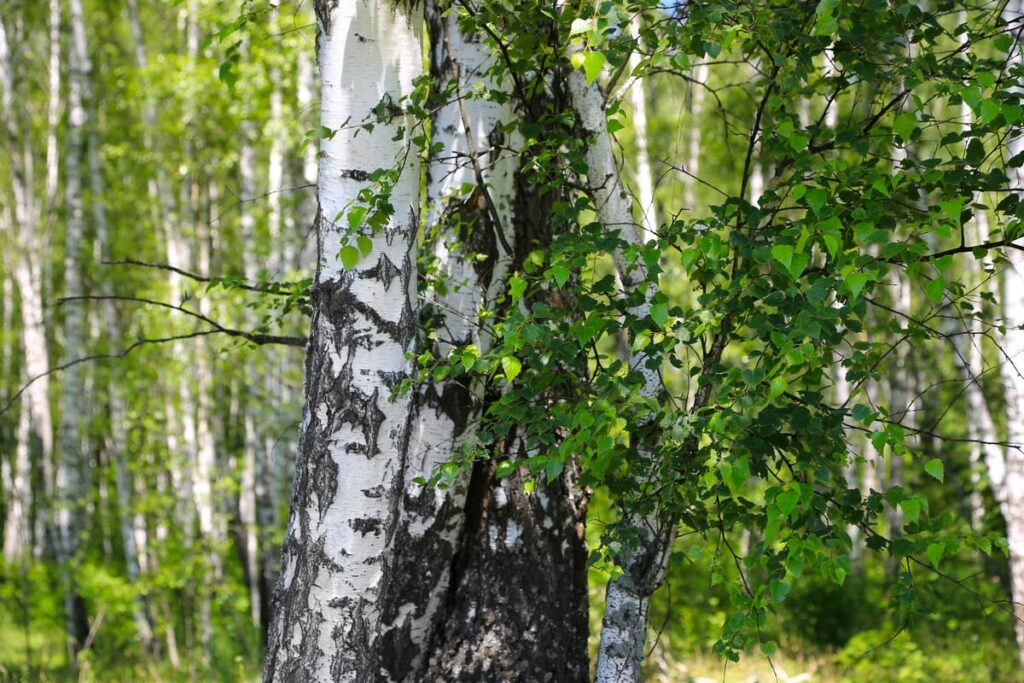
Seeing birch trees in Texas is now more common than ever before. Birch trees can provide both food and habitat. So, they play an important role out there. In addition, as part of Texas biodiversity, it is important to get a deeper understanding of them.
In this blog post, we’ll talk about birch trees. So, here you will learn what they are, how to properly care for them, and some other crucial factors that you need to know if you are planning on having one of them in your yard.
Birch trees belong to the genus Betula and are classified as part of the Betulaceae family of plants. The size of them can vary depending on the type but they are medium-sized and can measure up to 50 feet tall.
Regarding the lifespan, they are sadly short-lived trees. In fact, they rarely go beyond 100 years old which can sound like a big number for us but for trees, it isn’t. But wait, that’s not all, other species like white-barked species usually reach the end of their life at the young age of 20 years.
The birch tree is a genus of over 40 species that are almost all native to Europe and Asia.
Birch trees are best known for their striking ornamental bark. They can be easily distinguished through their splendid bark since this is the one that gives them their common name.
For example, gray (B. populifolia), white or paper (B. papyrifera), black (B. lenta), yellow (B. alleghaniensis), and red or river (B. nigra). Most people often identify them by the bark color.
The river birch, also known as Betula nigra is a type of birch tree When talking about birch trees in Texas, it is impossible to overlook that because of their beauty and the fact that they are native to the USA.
River birch trees also known as red birch or water are commonly found in East Texas. Generally, you will find them on rich soils, like at the edge of swamps, ponds, lakes, and other wet areas.
River birches are an amazing option for those who seek a way to upgrade their landscape beauty. It is a good way to draw the attention who have the honor to look at your amazing yard. The bark of River birch trees is cinnamon-colored and that’s why people usually call it red birch.
Curiously, people have decided that planting them in groups of three is better than planting just one or more than 3. In this way, it looks like an order that would have happened in nature, thus you are creating an informal, natural look in your landscape.

No words are enough to describe the impressive beauty of birch trees. Yes, they play an important role in beautifying Texas landscapes.
But wait, their importance does not stop there it goes beyond as it can provide food and habitat for several animals and they can also help prevent soil erosion. Let’s see this in the section below:
Birch Trees in Texas provide habitat and food for various wildlife species. Including birds and insects. So, Birch trees are important for forest food chains.
In addition, birch trees are often planted along waterways to help prevent soil erosion. Their extensive root system anchors the soil and reduces the risk of sedimentation in rivers and streams

Keeping birch trees robust and healthy is not an easy task.
Pruning, watering, mulching, and fertilizing, all play a vital role in keeping birch trees at their best and need to be done correctly.
Birch trees are strong and can withstand a lot. However, to ensure it will have a long lifespan healthy, and look at its best you need to ensure that it is ideally planted and that it will receive what it needs to thrive.
The birch trees thrive in sunlight or partial shade in wet sites with acidic soil (PH 5.0 – 6.5). However, some types of birches can adapt well to alkaline soils.
Of course, proper watering is crucial to grow your birch trees. Generally, birch trees need to be watered at least once a week during a slow 2-3 hours period. In a month, your beloved birch tree should receive around 30-40 gallons of water (including rainfall) This is to keep the soil moist.
Last and foremost, proper mulching also plays a vital role. Mulching your tree has benefits that go beyond the aesthetical ones. It also helps to keep the soil cool in the summer heat, keep the water in the soil, and more factors that your birch tree needs.

There are several types of birch trees in Texas each one with unique characteristics that make them stand out from the others. The only thing that makes them equal is their amazing aesthetic appeal.
Finding birch trees in Texas is quite common but the one that you probably find more often is the river birch since this tree is native to Texas.
Remember to follow our advice on proper watering, fertilizing, and mulching. In addition, since they are fast-growing trees, proper pruning and knowing when it is the best time to trim trees in Texas will help them grow healthy and robust.
Click on the Facebook icon to share this article!